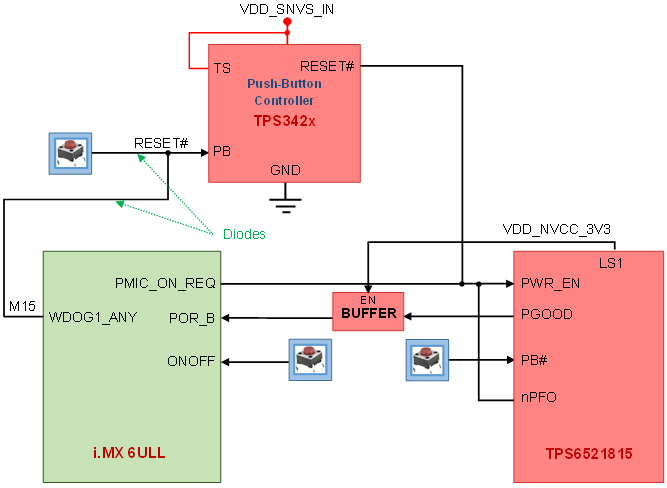TIDUEW7 May 2020
- Description
- Resources
- Features
- Applications
- Design Images
- 1System Description
-
2System Overview
- 2.1 Block Diagram
- 2.2 Design Considerations
- 2.3 Highlighted Products
- 2.4 System Design Theory
- 3Getting Started, Testing Setup, and Test Results
- 4Design Files
- 5Software Files
- 6Related Documentation
2.3.4 Reset Scheme
The reset scheme for this project is shown in Figure 14. The DCDC6 low-power buck regulator from TPS6521815 provides the VSNVS voltage from the coin-cell. If the coin-cell is not inserted, the PMIC will still provide VSNVS supply first through SYS_BU input. This is critical to ensure the power-up sequence is correct. When VSNVS is stable along with all the power outputs, the PGOOD pin will de-assert the Power-ON Reset (POR_B).
A reset push-button is connected to the watchdog output of the i.MX 6ULL processor in a wire-OR configuration, which goes into the PB input of a TPS342x push-button controller. The push-button controller can override the enable signal (PWR_EN) to the PMIC and the POR_B input on the processor simultaneously, forcing the system to reset. To shut the system down completely, a separate push-button connected to the ONOFF pin of the processor is used.
